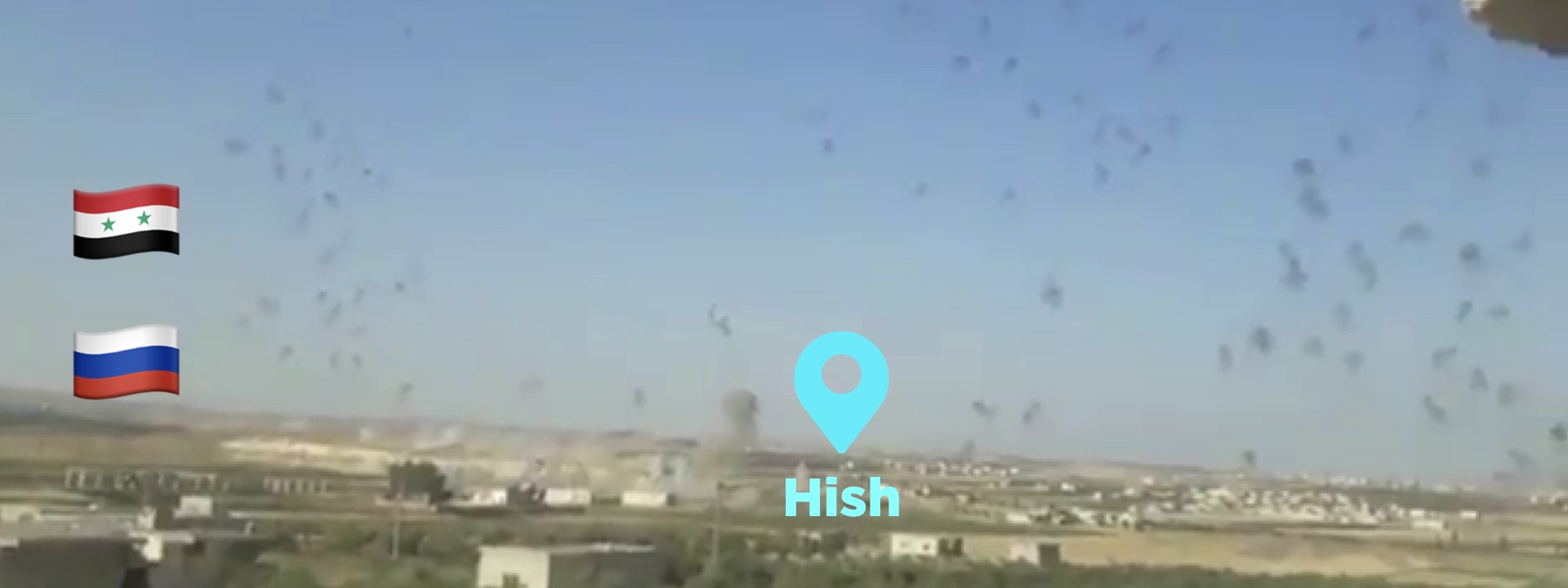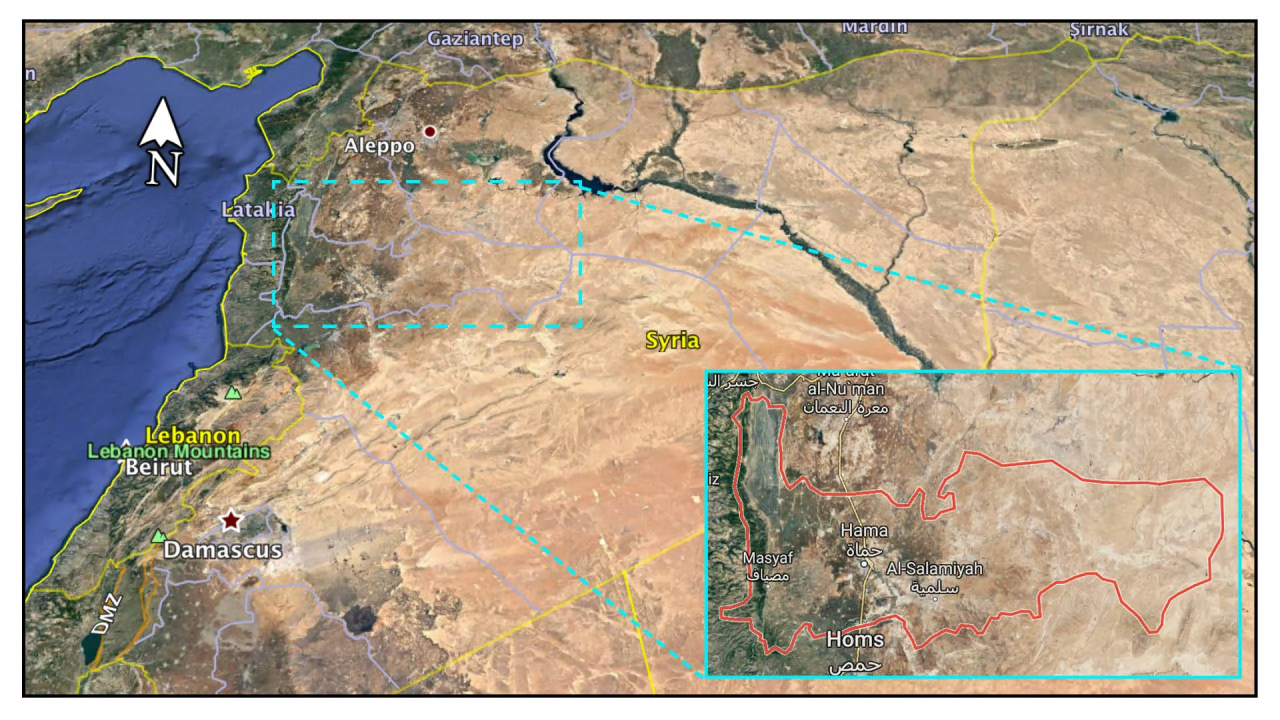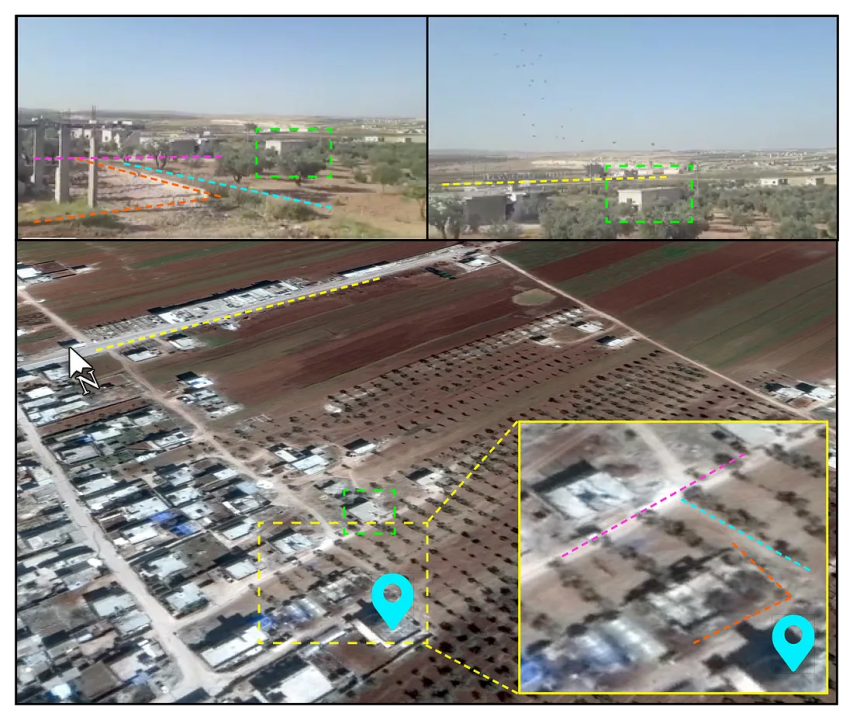Cluster Munitions Use in Hish, Syria
Newly released videos provide open-source proof of Assad’s cluster munition use in northern Syria
Cluster Munitions Use in Hish, Syria

BANNER: (Source: @LAndriukaitis/DFRLab via @Kyruer/archive)
Recently surfaced videos provided open-source proof that the Assad regime has been using cluster munitions — in violation of international ban — in its latest Hama offensive.

The Assad regime’s offensive started in late April 2019 with the aim of breaking through heavily defended rebel lines in northern Syria. The DFRLab previously found open-source proof of incendiary weapons use in the same offensive. Human Rights Watch reported on June 3 that the Russia-Syria joint military operation was using internationally banned and other indiscriminate weapons against civilians in these attacks. Similar offenses have been reported by the Syrian Observatory for Human Rights in the Kaban area, al-Qassabiyyeh, Khan Shaykhun, Kafr Owaid, Baraboo, Abdeen, al-Hbit, Maarrat al-Nu’man, Arinbeh, Tremla, Ma’aret Hurmah, as well as Hish.
In the case of incendiary munitions, daily satellite imagery can be used to track the burn marks they leave behind. In the case of cluster munitions, however, the low resolution of satellite imagery makes assessment of the damage far more difficult, as the bombed areas rarely catch fire. Cluster munitions are bombs containing multiple explosive submunitions: they have enormous destructive potential. As a result, most countries ban their use, especially in civilian-populated areas.
On May 26, 2019, two videos surfaced online claiming to show the use of cluster munitions in the small rebel-held town of Hish in Northern Syria.
Both videos captured the cluster submunitions blowing up in the air over the town of Hish. The DFRLab geolocated both videos, confirming that the bombs were used as reported.
The first video was taken from outside the city.
While few geolocation details were visible in the video, a water tower and the roofs of two mosques were sufficient to allow for geolocation. Based on the camera angle and geolocation of the identifiable structures, this video was likely recorded in the western part of the city looking north.

The second video was recorded from within the city itself. The visible agricultural fields, a series of roads, and an abandoned building suggested that the video was recorded in the eastern part of the city: the DFRLab was even able to geolocate the house the video was likely recorded from precisely, based on the vantage point in the video.

The DFRLab ran a reverse image search of both videos. The results indicated that the videos had not been posted online before, suggesting that they were original. These videos serve as open-source proof of banned cluster munition use by the Assad forces, corroborating the reports by the Syrian Observatory for Human Rights and Human Rights Watch.
Register for the DFRLab’s upcoming 360/OS summit, to be held in London on June 20–21. Join us for two days of interactive sessions and join a growing network of #DigitalSherlocks fighting for facts worldwide!

